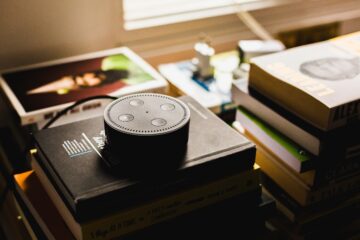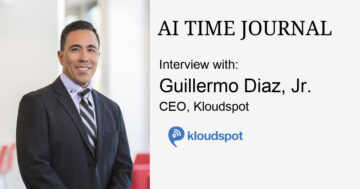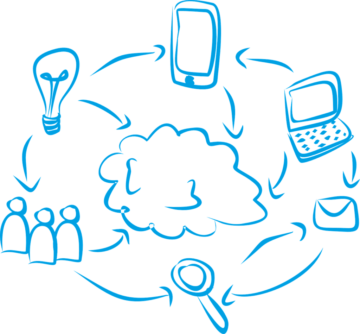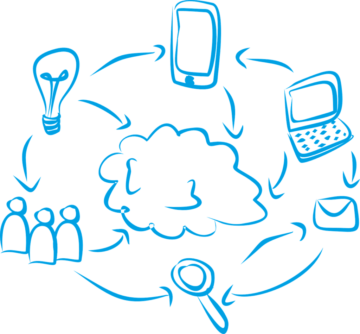AI & IoT Industry Experts share their views on the AI & IoT Trends in 2020
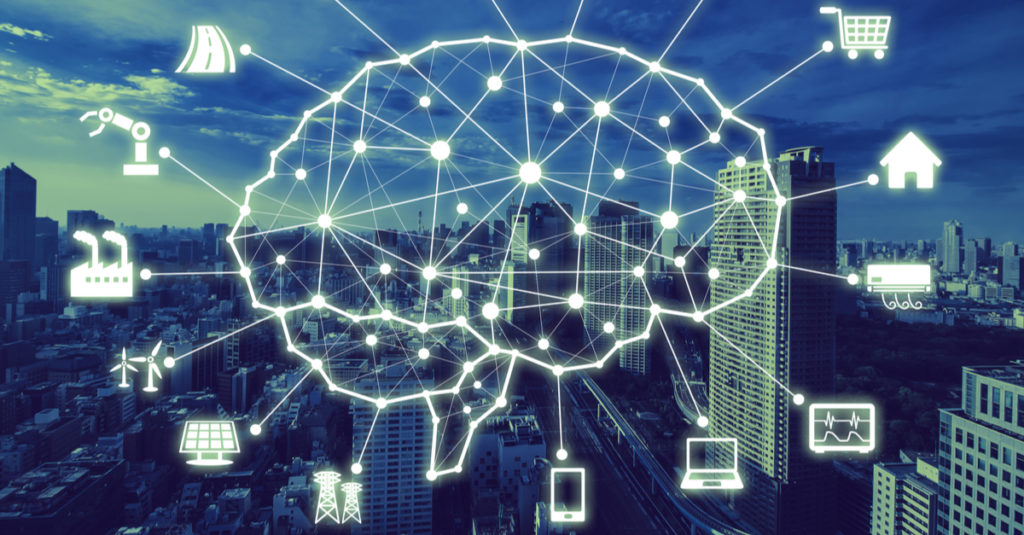
Over the past week, we have surveyed AI & IoT industry experts with the following question:
What have been the most relevant developments, breakthroughs and advancements in AIoT in 2019, and what do you foresee for 2020?
Insights from experts are always fascinating and is a great way to be in momentum. In this trend talk with AI & IoT experts, I was quite surprised to witness that most of them are synchronized in their 2020 technology prediction that AI is going to continue as a significant element for the value creation in their businesses. A mention of the varied use cases of AI like Automatic Number Plate Recognition, Video Analytics, etc.. enlightens that AI is more of a human-centric factor and finds the intensive applications across multiple industries. The need for automatic local intelligence & controlling the IoT devices through the local language has been well expressed. One expert accentuates AI as a huge data handling system to eliminate the bootless IoT data, while the other comments on the limits of the Deep Learning Neural Networks and featured the importance of the Spiking Neural Networks. Of all, the quite impressive comment on the data-as-a-service will enlighten the reader how humongous data is being dealt with AIoT systems. An expert exhibiting his confidence in Precision Agriculture is the best example of the technology potentiality that 2020 awaits in all the sectors. Read the complete article to understand and enhance the contagious knowledge that I have gained while interacting with the below super amazing experts.
The list of experts surveyed for this article includes Antonio Grasso, Roger Levinson, Devashish Paul, Ken Herron, Sairam Vedam, Gerry Christensen. We want to thank them for sharing their knowledge and insights with us.
Antonio Grasso, Digital Transformation Advisor
Intelligence at the edge is a reality, we are seeing many IoT devices that have cognitive capabilities on board. Many chip makers are working heavily on that.
This open to unbelievable achievement enhancing the device capabilities to handle events without being programmed for.
Voice recognition, computer vision and process automation are only few features that we can use to give objects a local intelligence.
During the 2020 I see more convergence of AI with IoT and I hope we will se an embedded intelligence that can drive more features fostering a smart and sustainable use of medical devices as example.
This what I like the most, technology for a better, sustainable, future. #TechForGood
Roger Levinson, COO at BrainChip
Deep Learning tends to be the center of hype today, and Deep Learning Neural Networks (DNN) are doing useful work such as financial risk analysis or image classification, among others. But we’re seeing the limits of DNNs for new and evolving applications such as in Edge and IoT. DNNs can classify incoming information, but they cannot perform open-ended inference, that is, they can’t “think” or adapt when new information comes in. Developers have tried to improve the foundational technologies, but that’s only improved capabilities incrementally.
Given this, interest in Spiking Neural Networks is growing. SNNs more closely mimic the human brain, which learns and adjusts through a process called Spike Timing Dependent Plasticity (STDP). In the past working with SNNs was hampered by architectural design issues, but there have been huge strides in removing those roadblocks and we’re seeing new ways of applying STDP to build better neural networks, thus more intelligent systems.
I think we’ll also see how DNNs and SNNs can be combined to expand AI processes, for example, conventional DL can deliver fixed classifications, and SNNs will combine those classifications in dynamic ways, such as incremental learning and making predictions.
Devashish Paul, CEO and Founder, BluWave-ai
In 2019 we’ve seen the volume of IoT and sensor data exceed what static machines or humans can do anything with. A perfect example is CERN’s particle accelerator: it collects 1 Petabyte of data every second but 99% is thrown out because they can’t keep up with this firehose of data and use it in real-time or have enough space to store it for offline use.
Sectors as varied as oil and gas, mining, aerospace, smart cities, and agriculture are all dealing with too much real-time data. And if you don’t extract the data’s value fast, the value is gone. With smart grids, data from or about smart meters, real-time pricing, temperature, humidity, wind turbine output, solar farm output, transmission line readings and more overwhelm the system to the point that data is often only polled once per hour or once per 15 minutes because that is all the conventional computing systems can handle and make decisions with.
This is where AI comes in, and where we’ll see increasing traction in 2020. AI is able to react in real-time to the firehose of data and siphon out the most relevant trends/changes/thresholds for the application and the business.
Ken Herron, Chief Marketing Officer, UIB
The answer is right there — AIoT. We realized first-hand in 2019 that the best way for us to get actionable business insights out of the unprecedented amounts of data our IoT devices generate is to use AI. For 2020, I see us finally reaching the tipping point for companies meeting their customers where they are. “I want to control my IoT devices with natural language voice and text in my language on my favorite communications channel.”
Sairam Vedam, CMO at Innominds
AI combined with IoT & other emerging technologies is revolutionizing and transforming the world by offering limitless possibilities (and it will continue to do so).
In 2019 we’ve witnessed AIoT’s capabilities & applications leading to some breakthrough solutions and market-wide adoptions across various sectors. The areas include – Edge, Automatic Number Plate Recognition & Video Analytics, Object Recognition, Voice Assistants, Chatbots, Asset Tracking, Location Tracking and Geotagging, AIoT powered Supply chain management, Medical Data Processing, Call Records Data Management, Test Automation & RPA.
Year 2020 for AIoT undoubtedly, is very promising. With the culmination of various technologies and democratization of technology, undoubtedly there will be far more increased adoption, wider business applications, and more business use cases will emerge in AIoT space. It’ll be a more human-centric AI. In 2020 the trends we predict AIoT will massively disrupt and enable a truly connected enterprise that transcends Product engineering, Robotics (more human-robotics collaboration), Smart Automotive and Connected Cars, Smart, real-time, relevant shopping experiences (one step away from mass adoption) Smart appliances, Smart connected cities, Edge computing, Smart efficient Surveillance systems, 3D Printing, Predictive Maintenance & monitoring. One area which AIOT will also significantly transform is Precision Agriculture (AI-powered sensors, analytics, spatial analysis) for a better future to one and all. At Innominds we call this Powering the Digital Next.
Gerry Christensen, Founder and CEO, Mind Commerce
The Artificial Intelligence of Things (AIoT) has been relegated largely to the consumer electronics and appliances market. However, a trend change is occurring as leading vendors such as SAS are working to integrate data analytics and AI into IoT solutions for a broader range of industry verticals, products, and services. Initial surveys indicate that industry solutions are clearly market-driven and not just another technology looking to solve a problem.
For example, a global industry survey referenced by SAS indicated that industry leaders feel AI is the most important factor for successful IoT operation. Moreover, ninety percent of those surveyed said the use of AI in their current IoT operations has exceeded their expectations in terms of value creation.
From the Mind Commerce perspective, we see AIoT evolving to become more commonplace as a standard feature from big analytics companies in terms of digital transformation for the connected enterprise. This will be realized in infrastructure, software, and SaaS managed service offerings. More specifically, we see 2020 as a key year for IoT data-as-a-service offerings to become AI-enabled decisions-as-a-service-solutions, customized on a per industry and company basis. Certain data-driven verticals such as the utility and energy services industries will lead the way.
Image Credits
Featured Image: Shutterstock
- SEO Powered Content & PR Distribution. Get Amplified Today.
- PlatoAiStream. Web3 Data Intelligence. Knowledge Amplified. Access Here.
- Minting the Future w Adryenn Ashley. Access Here.
- Buy and Sell Shares in PRE-IPO Companies with PREIPO®. Access Here.
- Source: https://www.aitimejournal.com/trends-in-aiot-2020/20827/
- :has
- :is
- :not
- :where
- $UP
- 1
- 15%
- 2019
- 2020
- 250
- 3d
- 3D Printing
- a
- Able
- About
- accelerator
- achievement
- across
- adapt
- Adoption
- advancements
- Aerospace
- agriculture
- AI
- AI-powered
- All
- also
- always
- amazing
- among
- amounts
- an
- analysis
- analytics
- and
- Another
- answer
- anything
- appliances
- Application
- applications
- Applying
- architectural
- ARE
- AREA
- areas
- article
- artificial
- artificial intelligence
- AS
- asset
- assistants
- At
- Automatic
- Automation
- automotive
- away
- basis
- BE
- because
- become
- been
- being
- below
- BEST
- Better
- Big
- board
- Brain
- breakthrough
- breakthroughs
- broader
- build
- business
- Business Applications
- businesses
- but
- by
- call
- called
- CAN
- cannot
- capabilities
- cars
- cases
- Center
- ceo
- CEO and Founder
- certain
- chain
- change
- Channel
- chatbots
- chief
- chip
- Christensen
- Cities
- classification
- Classify
- clearly
- closely
- CMO
- cognitive
- collaboration
- collects
- combine
- combined
- comes
- comment
- comments
- Commerce
- Communications
- Companies
- company
- complete
- computer
- Computer Vision
- computing
- confidence
- connected
- consumer
- Consumer electronics
- continue
- control
- controlling
- conventional
- Convergence
- coo
- creation
- Current
- Customers
- customized
- data
- Data Analytics
- data management
- data processing
- data-driven
- dealing
- decisions
- deep
- deep learning
- deliver
- democratization
- dependent
- Design
- developers
- developments
- device
- Devices
- digital
- Digital Transformation
- Disrupt
- do
- doing
- Dont
- drive
- dynamic
- Edge
- edge computing
- efficient
- Electronics
- element
- eliminate
- embedded
- emerge
- emerging
- emerging technologies
- enable
- energy
- Engineering
- enhance
- enhancing
- enough
- Enterprise
- etc
- Ether (ETH)
- events
- Every
- evolving
- example
- exceed
- exceeded
- Exhibiting
- Expand
- expectations
- Experiences
- expert
- experts
- expressed
- external
- extract
- factor
- far
- farm
- fascinating
- FAST
- Favorite
- Feature
- featured
- Features
- feel
- few
- Finally
- financial
- finds
- fixed
- follow
- following
- For
- fostering
- founder
- Founder and CEO
- from
- future
- GAS
- generate
- get
- Give
- Global
- going
- great
- Growing
- handle
- Handling
- Have
- heavily
- his
- hope
- hour
- How
- However
- HTTPS
- huge
- human
- Humans
- humongous
- Hype
- i
- if
- image
- Image classification
- importance
- important
- impressive
- improve
- improved
- in
- include
- includes
- Incoming
- increased
- increasing
- indicate
- indicated
- industries
- industry
- industry experts
- information
- Infrastructure
- initial
- insights
- integrate
- Intelligence
- Intelligent
- interacting
- interest
- into
- iot
- iot devices
- issues
- IT
- journal
- jpg
- just
- Keep
- Key
- knowledge
- language
- largely
- lead
- leaders
- leading
- learning
- like
- limitless
- limits
- Line
- List
- local
- location
- location tracking
- looking
- Machines
- maintenance
- make
- Makers
- Making
- managed
- management
- many
- Market
- Marketing
- Mass
- Mass Adoption
- massively
- max-width
- medical
- medical data
- medical devices
- meeting
- mind
- Mining
- minutes
- Momentum
- monitoring
- more
- Moreover
- most
- much
- multiple
- my
- Natural
- Natural Language
- Need
- networks
- Neural
- neural networks
- New
- next
- number
- object
- objects
- occurring
- of
- offering
- Offerings
- Officer
- offline
- often
- Oil
- Oil and Gas
- on
- once
- ONE
- only
- open
- operation
- Operations
- or
- Other
- Others
- our
- out
- output
- particle
- past
- Paul
- percent
- perfect
- perform
- perspective
- petabyte
- plato
- Plato Data Intelligence
- PlatoData
- Point
- possibilities
- powered
- Powering
- Precision
- predict
- prediction
- Predictions
- pricing
- printing
- Problem
- process
- Process Automation
- processes
- processing
- Product
- Products
- programmed
- promising
- question
- range
- reaching
- React
- Read
- Reader
- real-time
- real-time data
- Reality
- realized
- recognition
- records
- relevant
- removing
- Revolutionizing
- right
- Risk
- roadblocks
- robotics
- rpa
- SaaS
- Said
- SAS
- Second
- Sectors
- see
- seeing
- seen
- sensors
- service
- Services
- Share
- sharing
- Shopping
- shutterstock
- significant
- significantly
- smart
- Smart Cities
- So
- Software
- solar
- Solutions
- SOLVE
- some
- Space
- Spatial
- specifically
- spike
- standard
- Step
- store
- strides
- successful
- such
- Super
- supply
- supply chain
- supply chain management
- surprised
- surveillance
- Survey
- surveyed
- sustainable
- system
- Systems
- Talk
- Technologies
- Technology
- terms
- test
- thank
- that
- The
- the world
- their
- Them
- There.
- they
- things
- Think
- this
- those
- Through
- time
- timing
- Tipping
- Tipping point
- to
- today
- too
- Tracking
- traction
- Transform
- Transformation
- transforming
- Trend
- Trends
- tried
- truly
- turbine
- understand
- undoubtedly
- unprecedented
- us
- use
- Use Cases Of AI
- utility
- value
- value creation
- various
- vendors
- verticals
- very
- via
- Video
- views
- vision
- Voice
- volume
- want
- was
- Way..
- ways
- we
- week
- WELL
- What
- when
- which
- while
- wider
- will
- wind
- wind turbine
- with
- without
- witness
- witnessed
- Work
- working
- world
- year
- you
- zephyrnet

